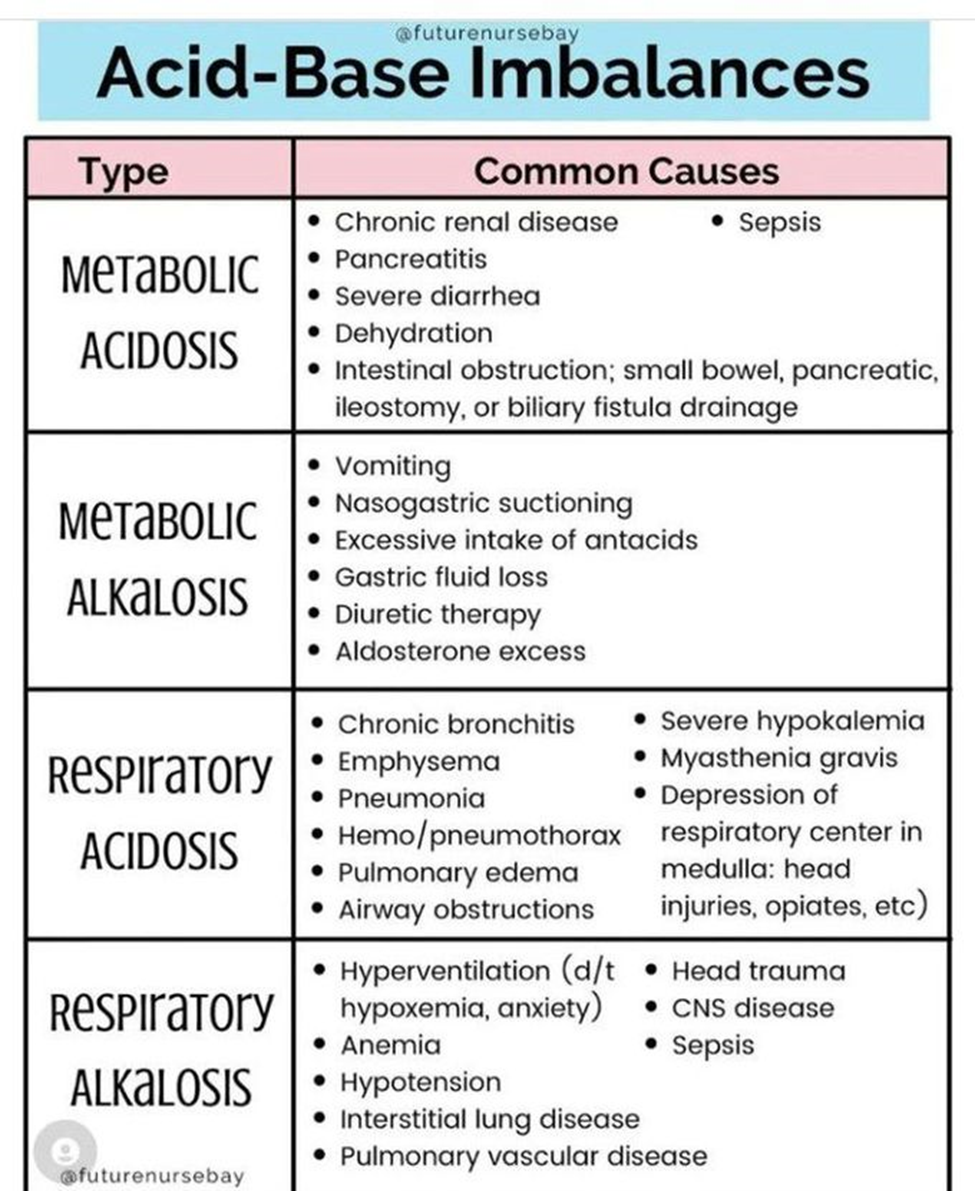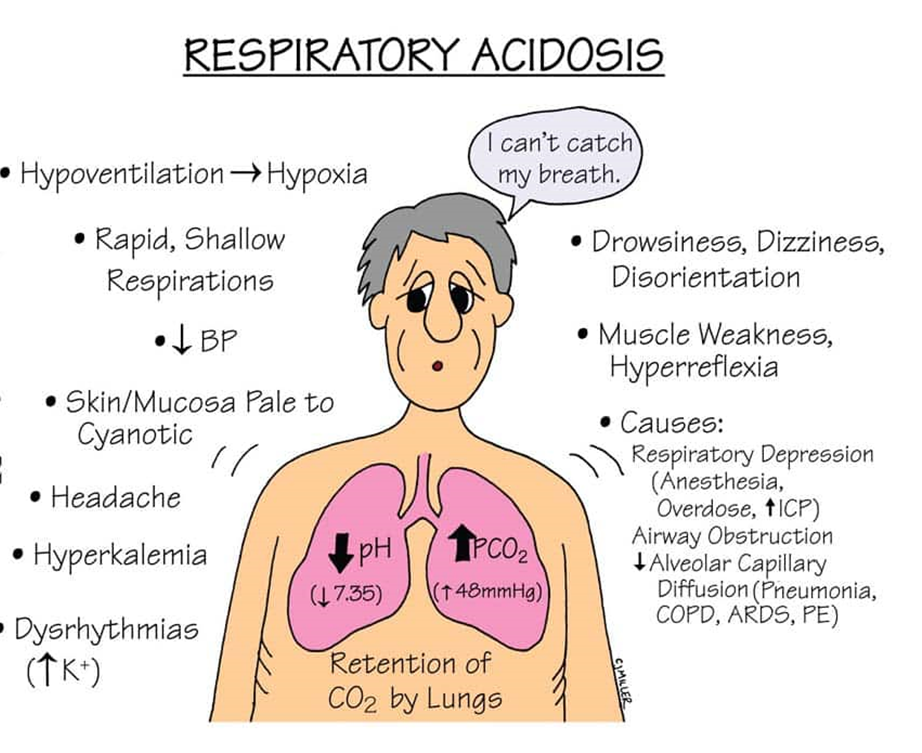A patient with a longstanding diagnosis of generalized anxiety disorder presents to the emergency room. The triage nurse notes upon an assessment that the patient is hyperventilating. The triage nurse is aware that hyperventilation is the MOST common cause of which acid-base imbalance?
Respiratory Acidosis
Metabolic Alkalosis
Metabolic Acidosis
Respiratory Alkalosis
The Correct Answer is D
A. Respiratory Acidosis:
Explanation: Respiratory acidosis occurs when there is inadequate elimination of carbon dioxide, leading to an increase in PaCO2 and a decrease in blood pH. This is typically associated with conditions that impair ventilation.
B. Metabolic Alkalosis:
Explanation: Metabolic alkalosis is characterized by an elevated blood pH and bicarbonate (HCO3-) concentration. It is not directly caused by hyperventilation but is often associated with conditions such as excessive vomiting or excessive bicarbonate intake.
C. Metabolic Acidosis:
Explanation: Metabolic acidosis is characterized by a decrease in blood pH and bicarbonate concentration. It is not directly caused by hyperventilation but may result from conditions such as diabetic ketoacidosis or lactic acidosis.
D. Respiratory Alkalosis:
Explanation: Hyperventilation is the most common cause of respiratory alkalosis. During hyperventilation, there is an excessive loss of carbon dioxide (CO2) through rapid breathing, leading to a decrease in the partial pressure of carbon dioxide (PaCO2) in the blood. This results in an increase in blood pH, causing an alkalotic state.

Nursing Test Bank
Naxlex Comprehensive Predictor Exams
Related Questions
Correct Answer is ["C","E"]
Explanation
A. Asthma:
Explanation: Asthma is associated with respiratory alkalosis, not respiratory acidosis. In asthma, there is often hyperventilation leading to a decrease in carbon dioxide levels.
B. Hyperventilation:
Explanation: Correct. Hyperventilation can cause respiratory alkalosis, not respiratory acidosis. It leads to a decrease in carbon dioxide levels.
C. Chronic obstructive pulmonary disease (COPD):
Explanation: Correct. Conditions like COPD can lead to respiratory acidosis. In COPD, there is impaired ventilation, leading to an accumulation of carbon dioxide.
D. Renal insufficiency:
Explanation: Renal insufficiency is not a direct cause of respiratory acidosis. Respiratory acidosis is primarily related to respiratory system dysfunction.
E. Pneumonia:
Explanation: Correct. Pneumonia can cause respiratory acidosis. In pneumonia, there may be difficulty in eliminating carbon dioxide due to impaired gas exchange.

Correct Answer is A
Explanation
A. Stress has likely caused an increase in the client's blood sugar levels:
This statement is accurate. Stress, especially related to surgery, can lead to increased levels of stress hormones, such as cortisol and catecholamines, which can elevate blood sugar levels. Surgery is a physiological stressor that can impact glucose metabolism.
B. The client's volatile fluid balance surrounding surgery has likely caused unstable blood sugars:
This is the most appropriate choice. Surgery, anesthesia, and changes in fluid balance can affect blood glucose levels. The stress response to surgery can lead to fluctuations in blood sugar, and patients may need insulin during this period.
C. The client has likely overstimulated her ability to control her diabetes using non-pharmacologic measures:
This statement is not accurate. Overstimulation is not a common cause of the need for insulin in the context of surgery. The stress and physiological changes associated with surgery are more likely contributors.
D. Alterations in bile metabolism and release have likely caused hyperglycemia:
While alterations in metabolism can impact glucose regulation, in the context of surgery, the primary factors are the stress response, changes in fluid balance, and potential alterations in the ability to eat or drink normally rather than specific effects on bile metabolism.
Whether you are a student looking to ace your exams or a practicing nurse seeking to enhance your expertise , our nursing education contents will empower you with the confidence and competence to make a difference in the lives of patients and become a respected leader in the healthcare field.
Visit Naxlex, invest in your future and unlock endless possibilities with our unparalleled nursing education contents today
Report Wrong Answer on the Current Question
Do you disagree with the answer? If yes, what is your expected answer? Explain.
Kindly be descriptive with the issue you are facing.
